arthur machen
Ideal para um dia chuvoso e invernoso.
Livros de Arthur Machen.
Ideal para um dia chuvoso e invernoso.
Livros de Arthur Machen.
After reading the story Nae Greeance o’ Bane I need to read more words written by Timothy Jarvis so I have bought The Wanderer and I can just say for now that it is an unmatched brilliance.
About Nae Greeance o’ Bane:
I was absolutely gripped during the entire story. Nae Greeance o’ Bane by Tim Jarvis is scary, claustrophobic and even funny. I loved the pacing of this story and the way Tim Jarvis creates a bizarre situation. If it were a movie, I would say that the CGI effects were the best and that the characters of Jeff and Tommy well developed.
You have to read this story. You won’t believe how good it is.
1. Do you have a specific writing style?
I’ve used the word ‘antic’ to refer to the way I write. Antic, which combines a sense of the grotesque with the bizarre and has overtones of the archaic, seems to me to go against consistency and seriousness of tone. A dark mood and a kind of unity of affect is often prized in modern Gothic and horror writing. I’d relate this, to go back to one of the roots of modern genre, to what Edgar Allan Poe called his ‘Arabesque’ side. But I’ve always found Poe’s ‘grotesque’ or impish and darkly humorous mode just as, and possibly even more, compelling. I particularly like how, in his strange puzzle of a novel, The Narrative of Arthur Gordon Pym, he veers jarringly between these opposed atmospheres. In my own work, I try to shift abruptly from cloying sentiment, to excessive gore, from eldritch horror to comic absurdity.
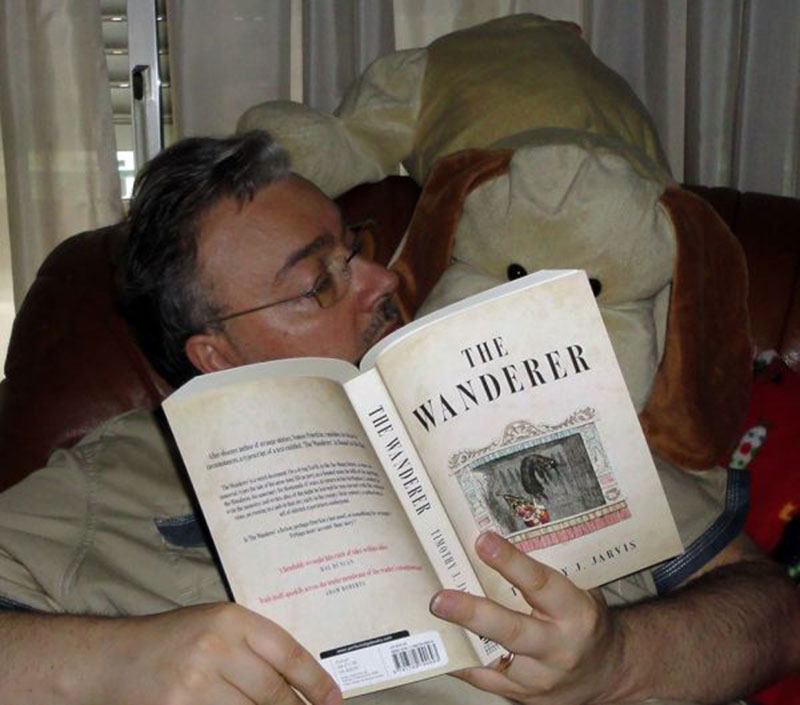
the wanderer
I also use found manuscripts, frame narratives, and stories within stories in my work, because I want them to seep out and contaminate the world in which the reader reads, not be closed fantasies. I feel more of an affinity to the disorienting involutions of a labyrinthine narrative, than I do to strong, neat plotting, and I hope to stretch readers’ comprehension and test their patience as much as possible.
2. What books have most influenced your life?
As a child I read Alan Garner’s The Weirdstone of Brisingamen and The Moon of Gomrath, and was immediately struck by them. They’re so different from other children’s fantasies, there’s bleakness to them, a sense of real peril, a narrative complexity and also a profound engagement with the land, Alderly Edge in Cheshire, and its lore – the books are not a motley mix of different mythologies, but a sustained and powerful engagement with British folktale. Their sense that the fantastic is not hermetic, sealed off from the ‘real’ world, has been a profound influence on my thinking and writing. In 2012, Garner finished his trilogy with a final volume, Boneland, which portrays one of the children of the earlier books, now a grown man dislocated and disturbed, still dealing with the trauma of his encounter with the fantastic, which he has erased from his memory, but which still marks him in horrible ways. But that atmosphere is already there in the earlier books, and in Garner’s other novels from the 1960s, Elidor and The Owl Service, and it is an atmosphere that profoundly shaped my thinking growing up.
3. If you had to choose, which writer would you consider a mentor?
I’d written some tales of adventure when I was young, but didn’t think of myself as a writer, or consider that it was something I wanted to do, till I was in my early twenties. Three writers, whose work I was reading obsessively at that time, had a profound influence on the way my inchoate fiction developed: Angela Carter, whose exhilarating formal inventiveness and transmutative, yet grounded, fantastic, I still attempt to ape; M. John Harrison, whose bleak, cruel, and dreary otherworlds in the Viriconium sequence, and the novel The Course of the Heart, were a huge influence on me, and whose thoughtful poetics, expressed on his blog and in essays, continues to inspire me; and Jorge Luis Borges, whose stories, especially those in which the unreal is found at the heart of the ‘real’, I found, and still find, have a powerful hold over me.
4. What are your current projects?
I’m currently working on a portmanteau novel which tells of London falling into decay and dissolution, and of the discovery of a series of manuscripts that relate stories of city’s tutelary daemons. Another strand details the life and death of a Belgian decadent poet during the siege of Paris in 1870. These two strands are bound up together by the idea that the crises in the cities are related to the decline of their daemons.
5. How much research do you do?
I don’t, as a general rule, do much specific research; I mostly read fiction, and steep myself in the atmosphere of various stories. But I do read up on a historical period if a narrative calls for it – I think it especially important for writers of the uncanny to get details right, seed the text with believable realistic elements that jar with the fantastic parts of the narrative. And I also tend to write about places I know and to walk them before writing; my practice is not psychogeographical, though, I’m not wearing down through layers of the landscape’s palimpsest with my tramping, but seeking the kind of epiphany that is to be found in the work of Arthur Machen, when a sudden transfiguring vision is had when walking through a well-known cemetery, or looking into the mouth a familiar alley.
6. Do you write full-time or part-time?
I only write part-time (and sometimes very part-time), but I’m lucky enough that my day job is to teach Creative Writing to undergraduate students, so I’m most of the time immersed in a creative environment.
7. Where do your ideas come from?
I do a lot of free writing, writing in which my conscious mind is as little involved as possible, in an attempt to dredge stuff up from the murk of my unconscious mind. I often do this to a prompt, a line of text from another book, or an image, something of that nature. I’ll then assemble some of these fragments, throw in some other disparate things that have interested me in some way, things I’ve seen, snippets of conversation I’ve overheard, things I’ve been told, images I’ve found, and things I’ve read from both fiction and non-fiction. And then I’ll force myself to come up with ways of linking together what is usually a fairly incongruous set. I can’t come up with ideas for my fiction deliberately, consciously, so I rely on tricks like this that force my unconscious to work. When it’s going well, I sometimes feel I’m tapping into some collective cultural pool of oneiric imagery, or working some kind of transmutative alchemy.
There are two key texts behind my way of writing. The first is Raymond Roussell’s posthumously published essay, ‘How I Wrote Certain of My Books’. In this essay, Roussell partially anatomizes his idiosyncratic poetics. He describes a technique he used to generate narrative content which consisted of the manipulation of homonyms, similar sounding words. He’d take a trite phrase such as a cliché or an advertising slogan, then come up with another phrase that sounded similar, but which had a different meaning. He’d then force himself to work the meaning of the second phrase into his narrative, no matter how odd it was. And this was just an early level of his method – later stages, which he declines to discuss in the essay, were presumably even stranger. While I don’t use a method as individual or as demanding as Roussell’s, the spirit of his process has influenced mine.
The second text is Gilles Deleuze’s late essay of 1993, ‘Literature and Life’. In it, Deleuze writes, ‘The writer returns from what he has seen and heard with bloodshot eyes and pierced eardrums.’ This is an important notion for me, the idea that writing is a risky endeavour, that it involves plumbing the depths in some way.
8. How can readers discover more about you and you work?
I’ve a couple of blogs: timothyjjarvis.wordpress.com, which contains information about me as a writer, some musings, and a soundtrack for my novel, The Wanderer; and treatisesondust.wordpress.com, which is a collection of antic texts I’ve found. I’m pretty poor at updating these, but I can also be found on Twitter, @TimothyJJarvis.
I’ve read one book by Jeff Gardiner, but I intended to read all of them. Why? Read my words about the book “A Glimpse of the Numinous”…
“Impressive”, that’s the best description I could come up to label this book.
A Glimpse of the Numinous by Jeff Gardiner gave me the opportunity to travel between genres, images and identities, and with only one ticket. With comedy, romance, thriller, horror, this book it’s a truly marvel of multitasking; it is impossible to get bored during its reading – we are facing an astounding writer.
All in all, A Glimpse of the Numinous is no ordinary book. If you’re searching for linear stories, then this book isn’t for you. But if you want to experience something different, then by all means, buy the book. You will have some much fun.
1. Do you have a specific writing style?
That’s difficult for me to say, and probably easier for an objective reader to analyse. I consciously do not write to a formula or even to a specific genre. I believe great writing can adorn any genre. I’ve read amazing horror, fantasy, detective, literary, romantic and children’s books. I have a very fertile imagination, which feeds into my writing, and I like to think I’m quite good at realistic dialogue, and at creating sympathetic characters. I love using language and some of my book titles are good conversation starters. The word ‘numinous’ sound magical to me, as does ‘Myopia’ – the title of my YA novel. I start a novel with a clear plan of where I want to get to, but love to leave things open and flexible so that the story and characters can ‘come to life’ and sometimes surprise me.
2. What books have most influenced your life?
As a kid I was mesmerised by books such as ‘The Wind in the Willows’ and ‘The Little Grey Men’ (by BB). As I entered adolescence I found Michael Moorcock, which began my lifetime fascination with everything he’s written (see my book ‘The Law of Chaos: the Multiverse of Michael Moorcock’). I developed a passion for stuff by H Rider Haggard, Algernon Blackwood, Charles Dickens, Arthur Machen, Herman Hesse… this list could get enormous. Mervyn Peake’s ‘Gormenghast’ trilogy is a huge influence, as are Moorcock’s masterpieces, ‘Gloriana’ and ‘Mother London’. Graham Joyce’s ‘Tooth Fairy’ is another that stands out for me.
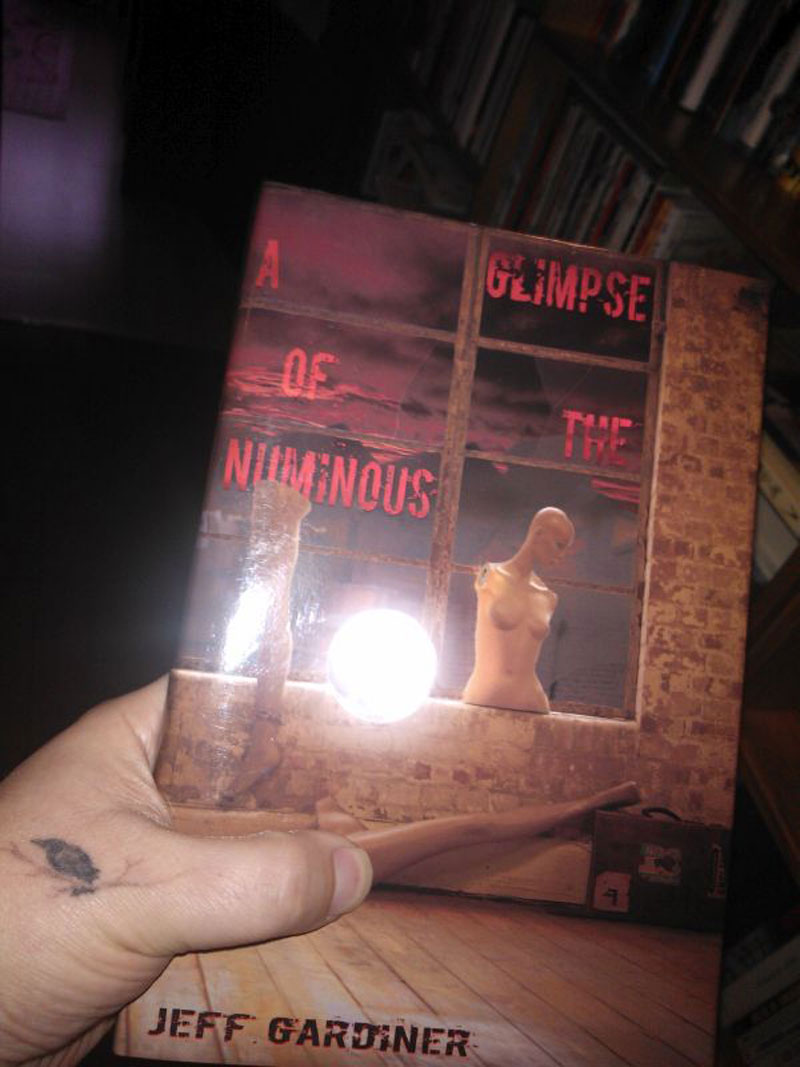
a glimpse of the numinous
I hope you don’t mind me mentioning the vital role of music in my life, too. For years I’ve listen to rock, metal and prog – especially such artists as Yes, Metallica, Pink Floyd, King Crimson, Hawkwind, Dream Theater and Steven Wilson. Music has inspired me a huge amount, listening, attending gigs, reading lyrics and absorbing artwork. It would be disingenuous of me not to mention the part music has played in my writing.
3. If you had to choose, which writer would you consider a mentor?
Michael Moorcock. He was very kind when I wrote ‘Law of Chaos’, and answered all my idiotic questions very patiently. He writes a lot about writing itself. Stephen King’s book ‘On Writing’ is about the best I’ve read as an aid to writing fiction. I’m with several publishers and each one has a community of authors with whom I share tips; ask and offer advice. The writing community is extremely friendly and helpful.
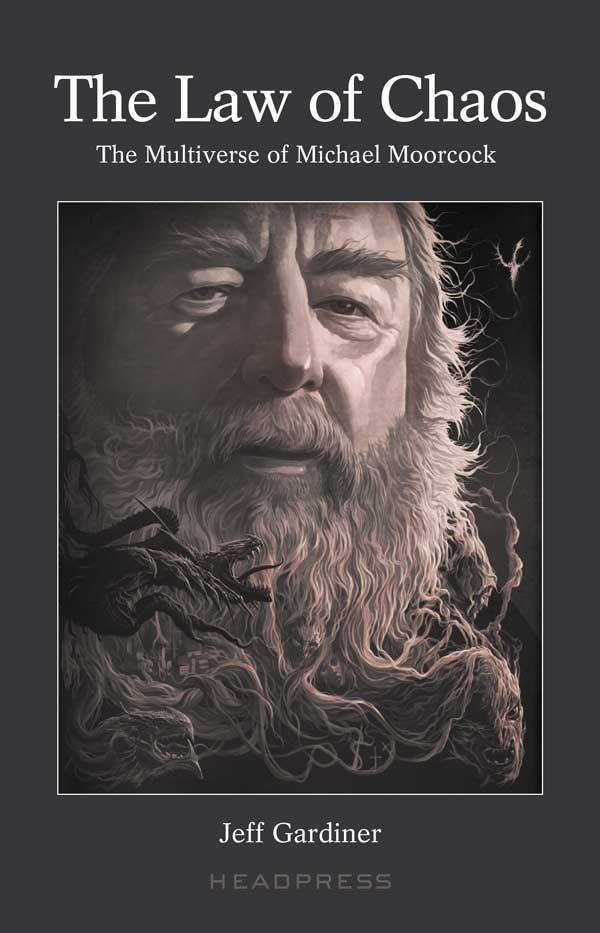
the law of chaos
4. What are your current projects?
I recently signed a three book contract with Accent Press for a YA/crossover fantasy trilogy. The first book is called ‘Pica’ (see what I mean about titles?), which is the Latin name for magpie. These books are set in our modern world but contain characters who have rediscovered an ancient magic linked with the natural world. I’m also keen to write screenplays and have completed a few which are currently being submitted to various agents.
5. How much research do you do?
This depends on the book. My novel ‘Igboland’ is set in Nigeria, inspired by my mum’s diaries from when my parents lived there (I was born in Jos, Nigeria). I decided to research the Igbo culture and the Biafran War, which are very important elements in the narrative, and my research was extensive for both. I learned a huge amount about the Igbo beliefs, known as ‘Odinani’, and some of the horrifying truths about the ethnic cleansing that went on during the Biafran War. One of the characters in ‘Igboland’ is an Igbo woman who is a victim of guerrilla brutality. Sadly, the tragedies continue in Nigeria to this day with the terrifying presence of Boko Haram.
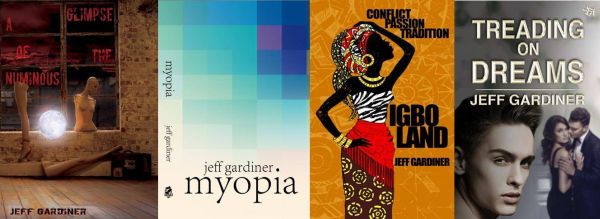
covers
6. Do you write full-time or part-time?
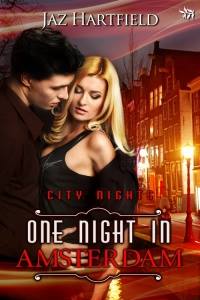
one night in amsterdam
I took voluntary redundancy from my teaching job, which has now afforded me more time. I have to take on other work to make enough money to survive, but it has given me this wonderful opportunity to just get on and write.
I’ve been given the gift of time and space, and must not squander it! I usually get 2-3 days a week when I can get 4-5 hours to concentrate on my writing until the kids get back from school.
I also try to use evenings and early mornings when I can. With six books published and three in the pipeline, plus all my stories in various anthologies and magazines, I think I’m quite prolific.
7. Where do your ideas come from?
I don’t mean this to sound annoying – but from my imagination. Growing up I always assumed everyone had a vivid imagination with a constant internal dialogue. My mind is full of images, colours, voices and musings, which makes it difficult sometimes to have a normal conversation with others, because when someone starts talking to me I have to break whatever intense thread is currently buzzing inside my head. I realise that makes me slightly irritating, and I’m working on it. So all my ideas tend to be personal. The stories in ‘A Glimpse of the Numinous’ are flights of fancy each based on a definite premise: what would the god Dionysus be like in the modern world? What would happen if a man developed a close relationship with a seagull – you know obvious things like that. ‘Myopia’ explores creative responses to bullying; ‘Igboland’ is about personal and national identity; ‘Treading On Dreams’ deals with obsession and unrequited love; ‘One Night in Amsterdam’ (under my pen-name Jaz Hartfield) is a fun-packed erotic romance!
8. How can readers discover more about you and you work?
I have an active online presence and I’d be keen to hear from anyone who’s enjoyed any of my works.
Jeff’s Website:
www.jeffgardiner.com
Jeff’s Blog:
https://jeffgardiner.wordpress.com/
Jaz Hartfield:
http://tirgearrpublishing.com/authors/Hartfield_Jaz/one-night-in-amsterdam.htm


são regularmente gastos na produção e manutenção deste blog uns bons pedaços de caldo, suaves e frutadas cervejas.
my goal is to keep me satisfied!
porta VIII is my personal site. Grab a beer and sit tight.
Are you comfortable? Take a look around to the new stuff and adventure trough the archives. Cá me podem encontrar a percorrer o mesmo caminho; a arrotar bom dia, boa tarde, boa noite, e por vezes um até já.
